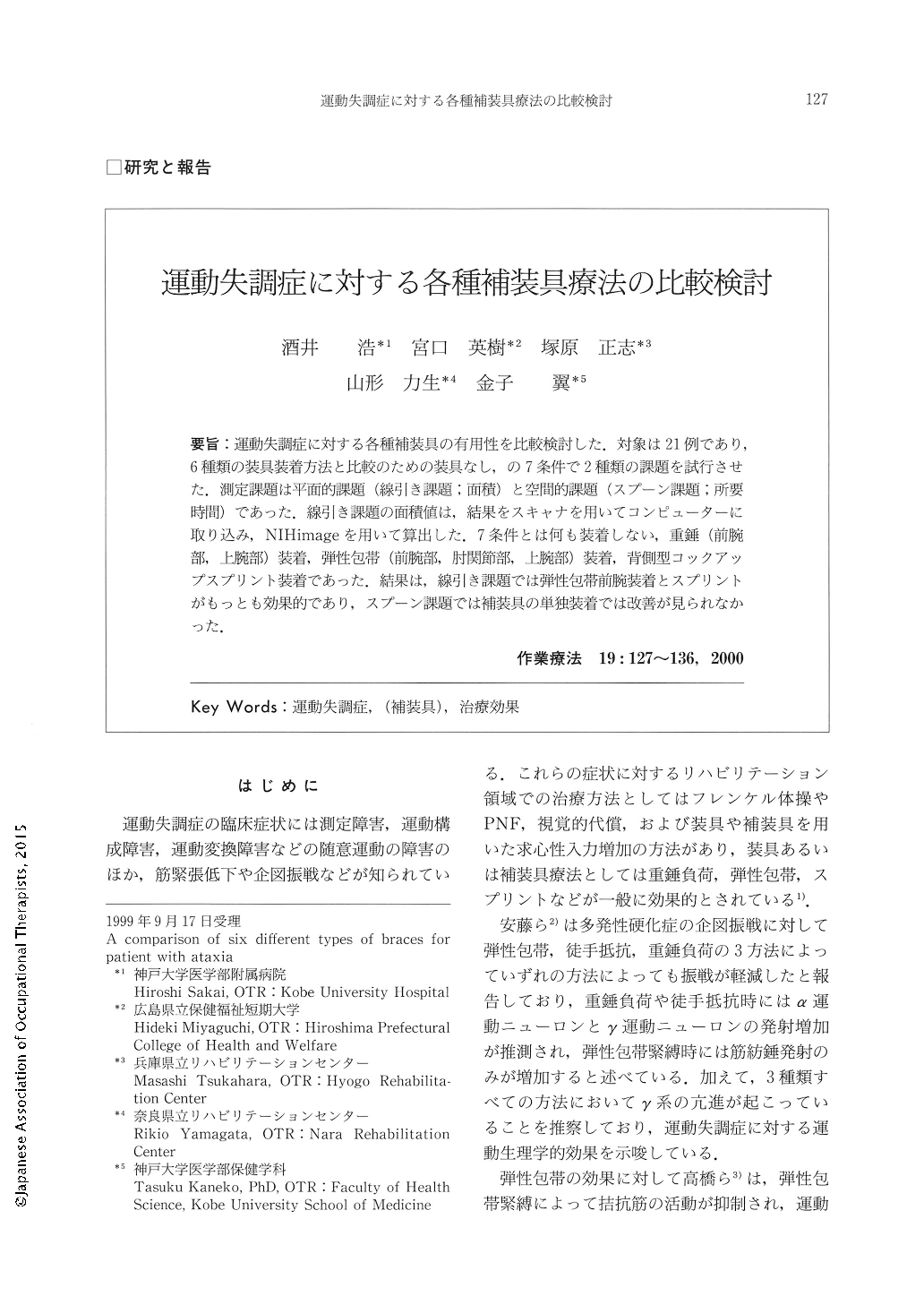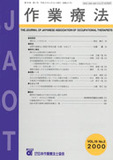Japanese
English
- 販売していません
- Abstract 文献概要
- 1ページ目 Look Inside
- 参考文献 Reference
- サイト内被引用 Cited by
要旨:運動失調症に対する各種補装具の有用性を比較検討した.対象は21例であり,6種類の装具装着方法と比較のための装具なし.の7条件で2種類の課題を試行させた.測定課題は平面的課題(線引き課題;面積)と空間的課題(スプーン課題;所要時間)であった.線引き課題の面積値は,結果をスキャナを用いてコンピューターに取り込み,NIHimageを用いて算出した.7条件とは何も装着しない,重錘(前腕部,上腕部)装着,弾性包帯(前腕部,肘関節部,上腕部)装着,背側型コックアップスプリント装着であった.結果は,線引き課題では弾性包帯前腕装着とスプリントがもっとも効果的であり,スプーン課題では補装具の単独装着では改善が見られなかった.
In order to confirm the usefulness of the bracing for the patient with ataxia, two different kinds of moter skill tasks were conducted. One was a line drawing task (task 1), in which the patients were asked to draw a line on a drawn line (base line) on paper as accurately as possible, and the other was a conveying block task using a spoon (task 2) in which the patients were asked to convey five small blocks on a plate into a 10 centimeter diameter can as quickly as possible. Each task was done on seven different conditions, which were with compression bandage for forearm, elbow joint and upper arm, and with a 0. 5kg weight belt for forearm and upper arm, and with a dorsal cock-up splint, and without any interventions. Twenty-one ataxic patients performed these tasks, and the data obtained were analyzed by a computed scanning system with NIHimage software for task 1 and by measuring time for task 2, Analysis of variance revealed a significant difference among seven different conditions only in task 1. And also the analysis of multiple comparisons revealed that motor skill, with compression bandage for forearm and dorsal cock-up splint, were better than with the other conditions.

Copyright © 2000, Japanese Association of Occupational Therapists. All rights reserved.


